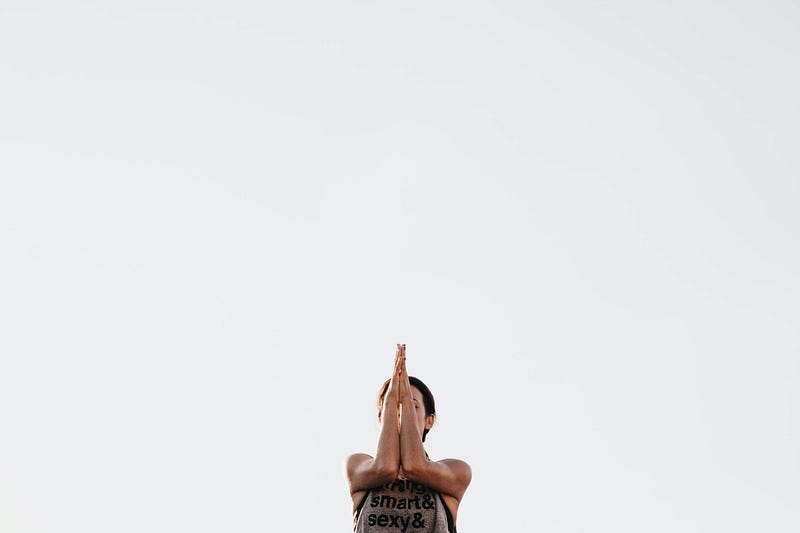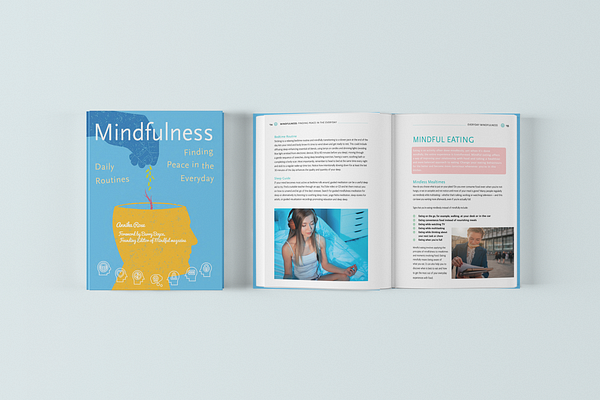
IT’S EXCITING TO THINK ABOUT HOW MUCH THE MODERN MINDFULNESS MOVEMENT HAS GROWN OVER THE LAST DECADE OR SO; HOW MAINSTREAM MEDITATION HAS BECOME, HOW A GLOBAL COMMUNITY OF PRACTITIONERS HAS FORMED AND HOW MUCH SCIENTIFIC RESEARCH HAS UNCOVERED SO FAR. HOWEVER, THIS RELATIVELY SUDDEN SURGE IN POPULARITY AND MINDFULNESS POPPING UP JUST ABOUT EVERYWHERE HAS LED TO SOME PERSISTENT MISINFORMATION DOING THE ROUNDS, TOO. PEOPLE CURIOUSLY ASK — DOES MINDFULNESS MEDITATION WORK? WHAT DOES IT DO FOR YOUR HEALTH? IS MINDFULNESS MEDITATION DANGEROUS? HOW DO I MEDITATE CORRECTLY? IN ANSWERING THE MOST COMMON MINDFULNESS MEDITATION QUESTIONS, THERE ARE MANY MINDFULNESS MYTHS TO BE BUSTED, OR AT LEAST BE AWARE OF.
MYTH-BUSTING THE MINDFULNESS MISINFORMATION
Every time I teach people how to become more mindful, I start off by shining a light on what mindfulness is not. I do this because there are a lot of myths and common misconceptions when it comes to mindfulness and meditation, and this can put people off, disrupt their practice or lead them far away from developing the valuable and life-changing skills that mindfulness has to offer. Which is all a great shame.
The most common myths I hear are:
1. Mindfulness meditation involves clearing your mind / stopping your thoughts / only having positive thoughts.
2. You have to sit cross-legged, in silence, on the floor to meditate.
3. You need lots of time / can’t be a busy person to practice mindfulness.
4. Mindfulness meditation is a religion / is associated with a religion or being a spiritual person.
5. Mindfulness meditation relaxes you and leaves you feeling blissful all the time.
So, let’s get to work and bust the most common mindfulness myths, one by one.
MYTH #1: STOP THINKING, START MEDITATING
If you know how to completely rid your mind of all thoughts and your body of all sensations then you know something that the rest of us don’t. We have upwards of 50,000 thoughts a day, so it’s quite impossible to block them all and stop ourselves from thinking, but I often hear this myth from beginner meditators. People regularly tell me they have tried to meditate but it didn’t work because they couldn’t stop their thoughts or feelings from popping up, their mind was too busy, so they gave up. I usually greet this one with a smile, congratulate them on becoming more conscious and encourage them to keep going. Because this disruption IS part of the process, it’s something we all experience when we meditate. Thoughts and feelings arising are normal: the happy, positive thoughts, the irritating negative thoughts, and all the random thoughts in between. All normal, all welcome.
A key aspect of mindfulness training is coming to understand you are not your thoughts, you simply have thoughts, the same goes for feelings and sensations. Learning to identify your thoughts, feelings and sensations without identifying with them is subtle but transformational. You can see things so much clearer when you create this space between you and the experience. Thoughts, feelings and sensations will always arise and interrupt the present moment, there’s no getting away from that. Your job is to acknowledge their presence, observe them without any judgement, and return your focus to exactly where you want it to go, whether that’s your body, your breath or something else. In time, your mind will become a kinder and calmer place.
MYTH #2: SIT DOWN, SHUT UP AND SWITCH OFF
I have been meditating for ten years now, and my least preferred posture for meditation is sitting down cross-legged. That’s not to say I never sit that way, but I prefer kneeling with cushions, sitting on a chair, lying down or walking. All of these positions are fine, so try them out and see which one works best for you.
I like variety in my personal practice, so sometimes I will follow a guided meditation on an app, sometimes I will have some soothing music on in the background, sometimes I sit in total silence. You might like to include apps and integrate technology into the experience, you might not. All of these options are valid ways to meditate, so again it’s about keeping an open mind, staying flexible in your approach and finding what works well for you. For me, the variety in posture and practices means I can meditate on the train, walking the dog, eating a meal, or wherever and whenever I like.

However you choose to meditate, you’ll probably notice your mind and body becoming tense or restless over time. Remember this is all normal too. It’s not a cue to give up and never try again! Instead, be curious about this experience. Return to your practice and watch what unfolds next time. As you do, you’ll build your mindfulness skills. Over time, you’ll become less reactive to what’s going on in your mind and body, and these normal ups, downs and distractions won’t have as much of a hold over you as they did before. You’ll find more peace in the everyday.
MYTH #3: I’M TOO BUSY TO BE MINDFUL
This is one of my favourites because I hear it more often than anything else. “Annika, I just don’t have the time to meditate” or “I’m too busy to be mindful”. I get it, because I was there once, too. I had a demanding job, a busy social life, passion projects and other pursuits that packed my schedule and left me constantly time-poor. I didn’t have the capacity to add anything else into my day, and I certainly couldn’t commit to doing it consistently.
So what changed? My priorities did. We’re all blessed with the same 24 hours (or 1440 minutes) in a day. How you use that time matters a lot. I found I was constantly busy because I was constantly saying yes to everything and instantly reacting to demands others put upon me. Once I took conscious control and reviewed exactly how I wanted to spend my time and identified what I wanted to focus on, my priorities shifted in a healthier direction. I value my wellbeing and therefore I needed to be proactive about looking after myself and make it a top priority — it’s as simple as that.

I decided to ease into my mindfulness meditation journey gently with just a few minutes a day, a couple of days a week. This equated to investing less than 1% of my day to mindfulness meditation, which seemed reasonable and something I could achieve. Once I noticed the benefits of being mindful, the more drawn I was to practicing mindfulness more regularly. It wasn’t a chore — it effortlessly became a habit and something I was deciding to do for my own health and happiness.
The beauty of mindfulness is how adaptable it is. So depending on how you want to practice, you may not need to devote any extra minutes in your day to meditating at all. There are informal and formal ways to practice mindfulness; informal being more integrated into your daily life (e.g. having a mindful coffee) whereas a formal practice (e.g. meditation) requires a little regular, dedicated space and time. Both have their place and can be of great benefit to you, so don’t stress if your schedule is busy this week, keep your practice flexible schedule friendly, and give each kind of approach to developing your awareness a try from time to time. Being mindful helps you to deal with distractions, stress and daily life in a more effective way, so the busier you are — the more you need mindfulness in your life!
MYTH #4: IT ALL SOUNDS A BIT NEW AGE, WEIRD AND “WOO-WOO” TO ME
The wisdom contained in the world of mindfulness has existed for thousands of years and is nothing new. A certain stigma still remains that it’s alternative, hippy or out there to try. Let’s debunk this myth. Mindfulness and meditation are often taught in a secular (non-religious or spiritual) way these days, and there’s plenty of science to support it now too. Mindfulness meditation is definitely more mainstream than ever before and is used by millions of people as a proven pathway to personal development, peak performance and greater health and wellbeing.
Mindfulness is the act of waking up and meditating is a pathway that makes this possible. The skill of awareness develops with practice, so I like to think of meditation as training for your brain to wake up and work at it’s best. Mindfulness meditation trains you to become more mindful, that is, more aware and awake, during the moments that make up your day. This means you get much more out of life — and that’s pretty magical!
Mindfulness meditation doesn’t require a set of special skills or beliefs for you to begin. So regardless of your spiritual or religious orientation, it is a powerful tool to try. You can certainly be mindful without being spiritual, simply showing up and being present is enough. Mindfulness meditation helps you to notice what’s going on in your inner and outer world, moment to moment, with greater clarity as you pay attention to right now, on purpose. It’s a highly practical and widely accessible way to work on your wellbeing, that’s now used worldwide. Mindfulness is a tool — how you choose to use it is up to you.
MYTH #5: IF YOU’RE NOT BLISSED OUT, YOU’RE DOING IT ALL WRONG
In a previous blog post, I covered the difference between mindfulness and relaxation. Spoiler alert — they’re not the same thing. Sometimes mindfulness meditation leads to a sense of relaxation, but sometimes it doesn’t. Sometimes meditation can be pleasant, sometimes it isn’t. Both are fine and completely normal. One experience is no better or more correct than the other.
If you expect every meditation to leave you feeling floaty, blissful and relaxed, you’re likely to be disappointed. If you accept whatever happens to happen that day, noticing where your attention has gone and gently returning it back to wherever you want it to rest every time it wanders away, you’re less likely to feel disappointed or create unnecessary stress and suffering for yourself. This is non-attachment in action. It takes time and effort to build your skills to be more mindful — but the rewards are worth it. With regular practice, you’ll start to move through life with more calm, clarity, and a greater feeling of presence and overall peace.

Are you avoiding or accepting?
Mindfulness is touted by some as a cure-all for just about anything, which is, of course, a myth. Struggling with this? Try mindfulness. Want to fix that? Try mindfulness. There is a growing body of science showing it can, in fact, lead to a multitude of benefits for some people, over time, however, it is not a miracle quick-fix for all. This leads to people giving it a go under false pretences that it will get rid of all of their problems, pain and discomfort. This just isn’t the case…
Instead, mindfulness training in it’s true sense teaches you how to be with pain, suffering or discomfort, accepting it’s there rather than avoiding it. You won’t always feel blissful, but that doesn’t mean you’re doing anything wrong. If today’s practise happens to be distracted, let’s say you’re ruminating on negative thoughts or worrying about what tomorrow holds; notice what is happening, accept it is normal, then return your attention to the present moment, and repeat this process as many times as you need to. There’s no need to avoid what’s going on, suppress how you feel or change your experience into something ‘better’. Try not to think that because you’re experiencing these things, mindfulness isn’t working for you. Just stay open, curious and present, ditch the unhelpful labels and simply let things come and go as they will. There is no particular goal to attain here, other than being with whatever arises, as it does. It’s impossible to get that wrong and you’ve got nothing to lose by giving it a go.
MINDFULNESS: WHERE TO BEGIN

Skip past the myths and choose to live mindfully from today. In my new book Mindfulness: finding peace in the everyday, I walk you through what it takes to ‘wake up’ and take you through simple steps to bring more calm and clarity your day. From waking up to working, eating to sleeping; I share easy ways to become present, train your brain and pay attention.

